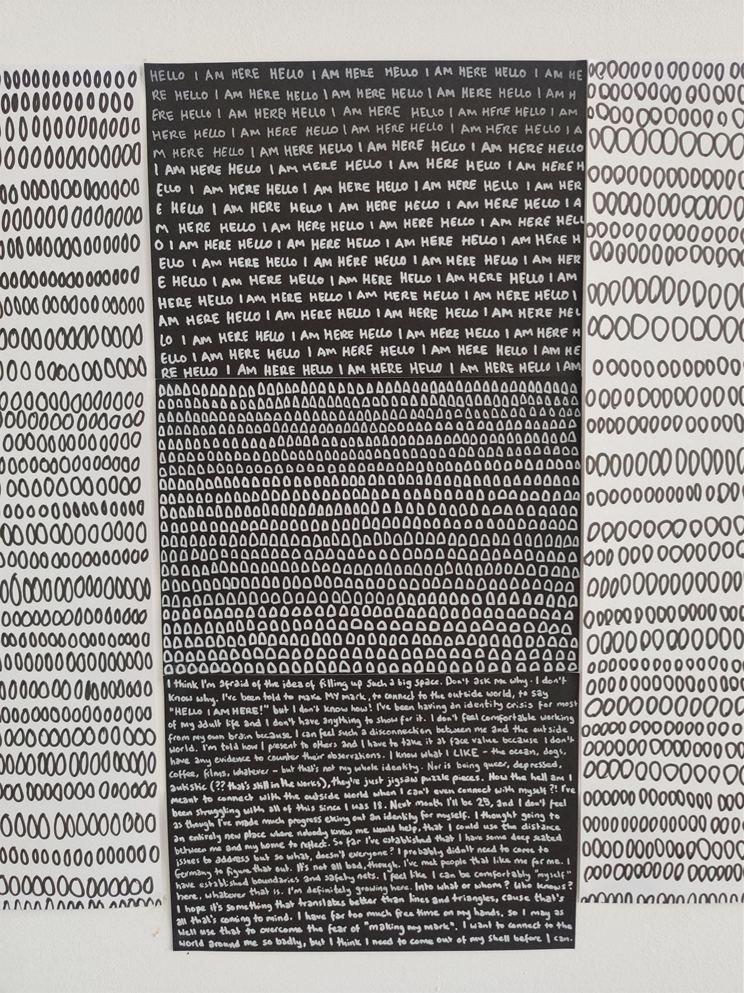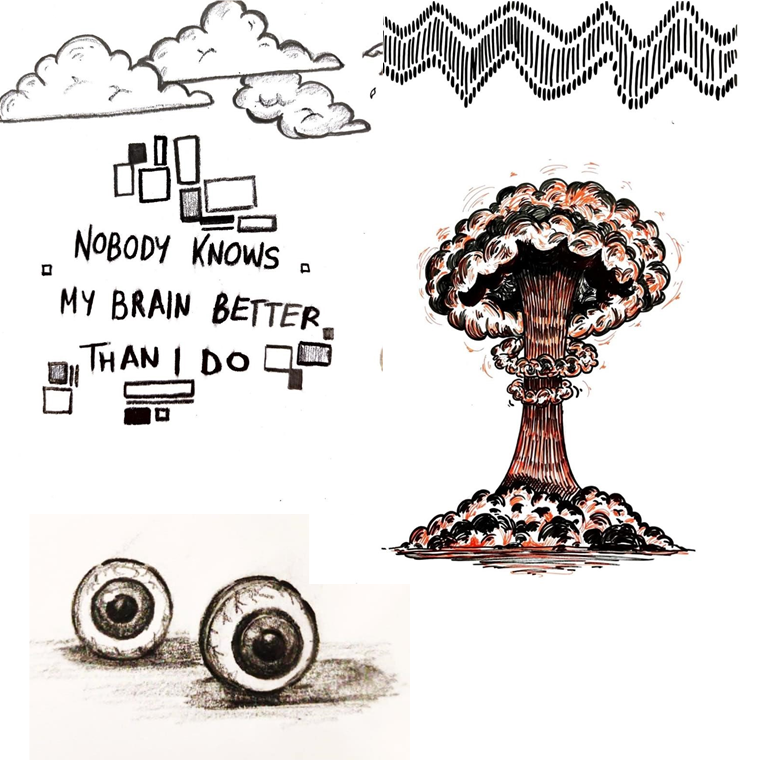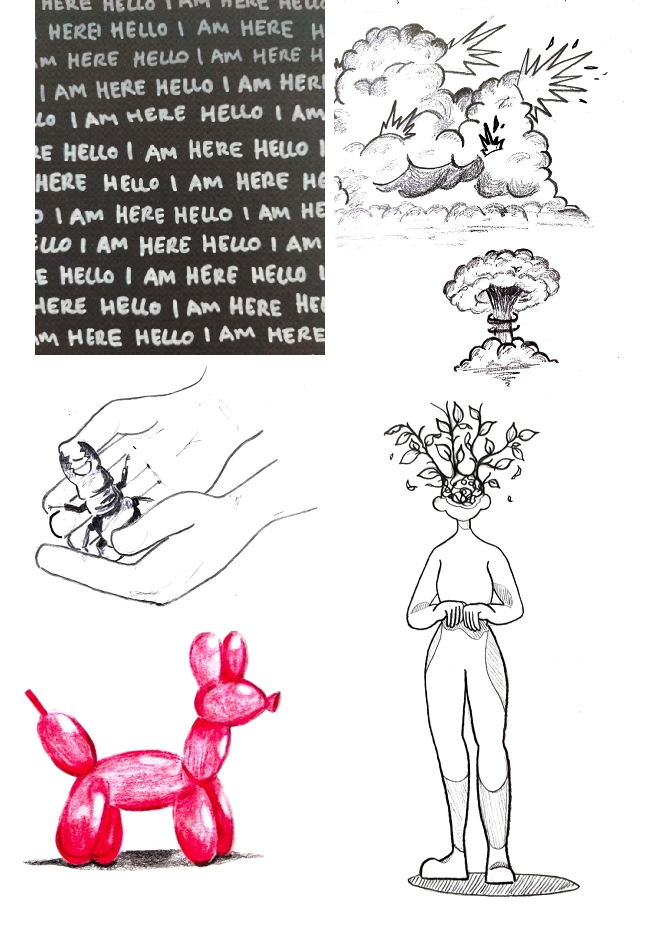“Even when you are made uncomfortable by a situation, you can still find it hard to get out of it. We learn from how hard it can be to do what you need to do to protect yourself. Who you are taught to be, how you are taught to be, polite, considerate, not troublesome, as a girl, as a student, is how you become more vulnerable, less willing or able to stop someone from pushing the line you need to protect yourself. When you know that to say no is to be judged as antisocial, it is hard to say no.”
(Ahmed, 2021, pg. 183)
“HELLO, I AM HERE: An Identity Crisis on Paper” is my ongoing art project, in which I am processing and establishing my place in the world. The title comes from my professor: during a meeting, in which we were discussing my work, he noted that I had been trying to make my art “illustrative” and putting too much focus on creating pieces that were aesthetically pleasing. In trying to make beautiful artwork, I was not making anything that was true to who I was as a person. He told me to try drawing and writing without putting too much forethought into it, to make my mark, to say, “Hello, I am here!”
Naturally, this challenge sent me into a tailspin. Where was I supposed to begin? How could I even start to project my inner self onto the world around me? What did I want the world to know about me, and what would that look like?
So far, I still don’t really know, but the imagery that keeps emerging is painting a picture (if you’ll pardon the expression) of the parts of myself I have trouble reconciling with.
When I was 22, a therapist noticed that I struggled to maintain eye contact with her while I spoke about the challenges of working as a waitress, and how I was embarrassed about struggling to complete basic tasks in a stressful work environment. After a quick screening test, she referred me to another, outside organisation in order to test for autism.
It has been nearly three years since this referral (thanks to a hefty waiting list), and nearly every day since has been spent picking up the pieces of this bombshell. Finally, I felt as though I understood myself on a much deeper level. It became easier to forgive myself for the explosions of anger over tiny inconveniences (God help the poor soul who would change my plans at the last moment), for my thin skin and for the routines and rituals that were once thought of as “childish”. It didn’t matter that I was not formally diagnosed (nor that I am still waiting to this day): this was the key to letting myself heal from years of confusion and self-hatred.
With this monumental relief, however, came an entirely new set of challenges. A discerning lack of validation, for one. It became remarkably easy for those around me to dismiss my newfound diagnosis, primarily on the basis that I “didn’t seem autistic”. Many times I heard the old adage, “Everyone is on the spectrum!”, always from well-meaning people, probably unsure of how to respond to such a bombastic statement as “I have autism”.
Upon further reflection, I can see how such a statement could be seen as a complaint. This quote from the book “COMPLAINT!” by Sara Ahmed resonated with me:
“Correction is often heard as complaint: as being negative, assertive, demanding. Coming out can involve an intentional disclosure, but that’s not always how coming out happens. Sometimes you have to admit something to yourself before you can admit something to others…”
(Ahmed, 2021, pg.119)
This project is my concentrated effort to be assertive, to gently remind my friends and loved ones to handle me with care.




One reply on “HELLO, I AM HERE”
Amazing project, and I totally relate to how you felt when your professor encouraged you to stop trying to “please the eye of the beholder” with your art. It’s something that I’ve been struggling with ever since I started showing the stuff I made. I used to post my sketches and illustrations alot on social media and my heart would sink with every like, every comment. I rarely post nowadays (which is not necessarily a good thing. I think it’s me that needs to maintain a healthier relationship with the social media, and less a problem with the social Media itself. In fact you could hide liks on Instagram which is pretty neat) but I still struggle with the very same thing throughout my studies. At times, specially this semester tbh, I could see the disappointment on my professor’s eyes. I knew what kind of work they wanted me to do, and I knew it’s a matter of personal taste and not quality. And yes I ended up doing what I knew will be praised – and I can’t wait to get rid of it right now. Can’t even look at it. It’s hard. As an artist – you need that ego boost from hearing compliments, you know at the end of the day you still have to pay the bills and eat, and then you don’t wanna betray yourself by making crappy art.
I can only imagine how you’re dealing with such comments regarding your autism. I have a (slightly) similar experience because of my anxiety and panic attacks. People would go “don’t stigmatise yourself!” If I open up, as if I’m calling myself a serial killer or something. I think, part of such reactions comes from the sad fact that some still do see disorders or mental illnesses as an stigma, something that one should be ashamed of, therefore saying stuff like “but you don’t look XYZ!” is their way of *comforting*, as silly as it sounds. But at the end of the way, they are also NOT making an effort to understand, simply by denying that there is something to understand in the first place.
Anyhow – lovely artwork. Very few things are cooler than making sense of yourself through art.